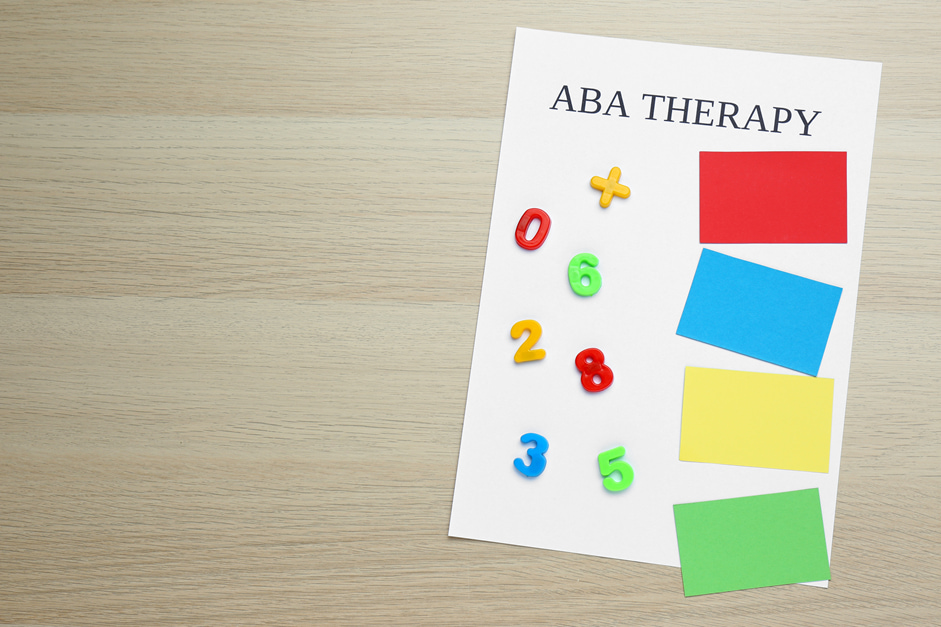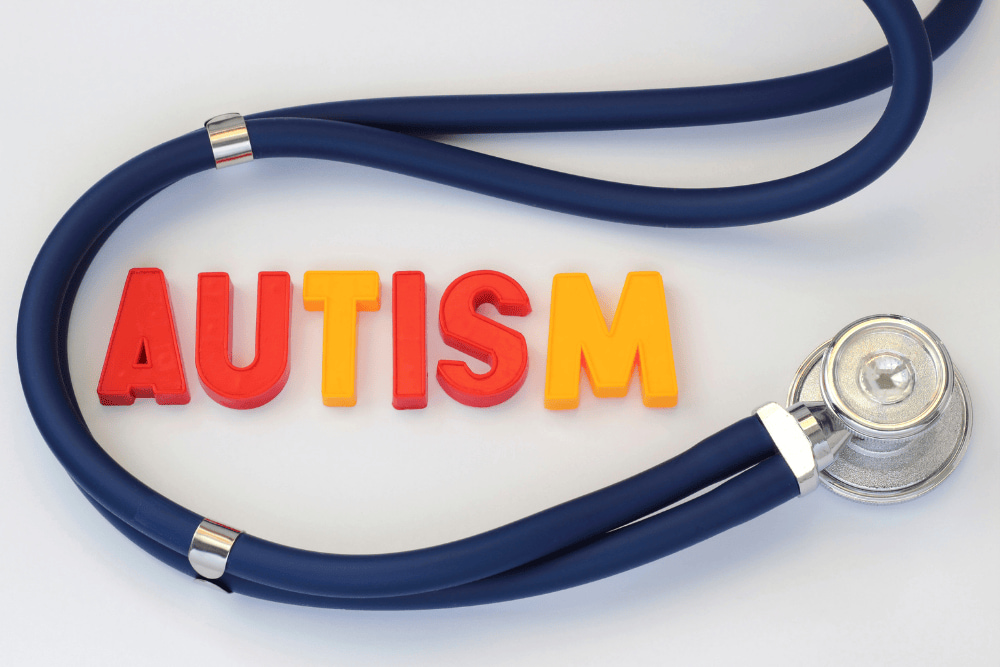Understanding Overstimulation in Autism
Overstimulation is a common phenomenon that occurs when an individual's sensory input exceeds their capacity to process it effectively. It can happen to anyone, but some individuals, such as those with autism, are more susceptible to experiencing sensory overload. At Above and Beyond Therapy we understand the difficulties that come with ASD and are committed to guiding parents, caregivers, and educators in recognizing signs of overstimulation and responding effectively.
What Is Overstimulation?
Sensory overload or overstimulation refers to a state in which the input from one or more of the senses, such as sight, sound, taste, or smell, becomes overwhelming and triggers a physiological response. This response activates the body's sympathetic nervous system, responsible for the "fight-or-flight" response. The brain receives more sensory information than it can effectively process, leading to feelings of irritability, anxiety, and distress.

What Are Common Causes of Overstimulation?
Overstimulation can occur due to various factors, and different individuals may have different sensory triggers. Some common causes of sensory overload include:
- Environmental Factors: Loud noises, bright lights, strong smells, and crowded spaces can overwhelm the senses and contribute to sensory overload. These stimuli may be perceived as more intense by individuals with sensory processing differences.
- Emotional Factors: Stress, anxiety, and fatigue can lower an individual's threshold for sensory input, making them more susceptible to sensory overload. These emotional factors can heighten sensitivity to sensory stimuli.
- Past Traumatic Experiences: Individuals who have experienced trauma in the past may be more prone to sensory overload. Certain sensations that remind them of the traumatic event can trigger overwhelming responses.
- Sensory Processing Differences: Sensory overload is commonly associated with conditions like autism, where individuals may have delicate sensory systems and be easily overstimulated by various sensory inputs. Sensory hypersensitivity or hyposensitivity can contribute to the experience of sensory overload.
It's important to note that sensory overload can manifest differently in each individual and may vary based on specific situations. Some individuals may be hypersensitive to certain stimuli but oblivious to others. Understanding the causes of sensory overload can help individuals and caregivers develop strategies to manage and prevent its impact.
Sensory Overload in Autism
Individuals with autism often experience sensory overload, which occurs when the input from any of the senses feels overwhelming and triggers a physiological response, activating the body's sympathetic nervous system responsible for the "fight-or-flight" response. For people with autism, sensory overload affects them differently from neurotypical individuals, as their sensory systems may be hypersensitive, hyposensitive, or both, making them more vulnerable to sensory overload.
Sensory Overload in Children With Autism
Children with autism spectrum disorder (ASD) are more likely to experience sensory overload compared to adults. This is because children have not yet developed sufficient coping skills, making them more susceptible to feeling overwhelmed by various sensations. Kids with ASD may be more sensitive to certain types of stimuli, such as specific fabrics or loud sounds, which can be overwhelming for them.
The symptoms of overstimulation in children with autism can vary. Some common signs include covering their ears, avoiding certain textures or clothing, becoming easily agitated, or having meltdowns in response to overwhelming sensory stimuli. It is important for parents, caregivers, and educators to be aware of these signs and provide support to help children manage their sensory needs.
Overstimulation in Adults With Autism
Overstimulation can also affect adults with autism spectrum disorder, including those with low support needs. Similar to children, adults with autism may display various reactions to sensory overload. It is important for these adults to develop strategies to cope with sensory overload and create sensory-friendly environments in their daily lives.
Understanding sensory overload in both children and adults with autism is crucial for providing appropriate support and accommodations. By recognizing the signs and symptoms of sensory overload, individuals with autism and their caregivers can work together to develop effective coping strategies and promote overall well-being.
Signs and Symptoms of Overstimulation
Individuals with autism may experience sensory overload, which can result in both physical manifestations and emotional reactions. Understanding these signs and symptoms is crucial in recognizing and addressing overstimulation in autism.
Physical Manifestations of Overstimulation
Sensory overload in autism can lead to various physical behaviors and responses. These behaviors serve as coping mechanisms to manage the overwhelming sensory input. Physical symptoms may include:
- Covering the ears to block out noise
- Rocking back and forth or pacing to self-soothe
- Attempting to hide or seek a quiet space to escape overstimulation
These physical responses are the individual's way of trying to regain control and find relief from the overwhelming sensory input. It's important to note that the specific physical manifestations can vary among individuals with autism.
Emotional Reactions to Sensory Overload
In addition to physical behaviors, emotional reactions are common in response to sensory overload in autism. The flood of sensory input can trigger feelings of anxiety, stress, and physical discomfort. Emotional responses to overstimulation may include:
- Overwhelm: The individual may feel overwhelmed by the excessive sensory input, making it difficult to focus and engage in daily activities.
- Anxiety: The heightened sensory input can lead to feelings of anxiety and nervousness.
- Irritability: Sensory overload can result in irritability, making it challenging for individuals to remain calm and composed.
- Stress: The constant exposure to overwhelming stimuli can create significant stress for individuals with autism.
It's important to remember that each individual may have different responses to sensory overload. Some individuals may exhibit hypersensitivity to certain stimuli while being less affected by others. Moreover, in some cases, sensory overload can lead to self-harming behaviors such as head banging, ear-clapping, self-scratching, or self-hitting.
By understanding the physical discomfort and emotional reactions associated with overstimulation, caregivers and professionals can create sensory-friendly environments and implement coping strategies that promote comfort and well-being for individuals on the autism spectrum.
Coping Strategies for Overstimulation
When it comes to managing sensory overload in individuals with autism, various coping strategies can help them navigate overwhelming situations. These strategies aim to provide support and assist individuals in effectively handling sensory overstimulation. Three common coping strategies include occupational therapy, sensory tools, and cognitive-behavioral techniques.
Using Occupational Therapy to Help Overstimulation
Occupational therapy plays a crucial role in helping individuals with autism develop coping mechanisms for sensory overload. This therapeutic approach focuses on improving everyday skills and promoting independence. Through specialized interventions and activities, occupational therapy helps individuals enhance their sensory processing abilities and develop adaptive responses to overwhelming stimuli.
Sensory Tools to Reduce Overstimulation
Sensory tools can greatly help individuals with autism manage sensory overload by providing needed input or reducing excessive stimuli. Tools like noise-canceling headphones, weighted blankets, fidget toys, and stress balls support self-regulation across home, school, and work settings. Choosing the right tools should be personalized to match each individual's sensitivities and preferences, creating a more comfortable and supportive environment.
Utilizing Cognitive-Behavioral Techniques for Overstimulation
Cognitive-behavioral techniques, including CBT, can help individuals with autism recognize sensory overload triggers and develop effective coping skills. CBT supports emotional regulation, challenges unhelpful thoughts, and teaches relaxation strategies for managing overstimulation
By combining occupational therapy, sensory tools, and cognitive-behavioral techniques, individuals with autism can develop personalized coping strategies tailored to their unique needs. Collaborative support from caregivers, educators, and therapists is essential to successfully implementing and maintaining these strategies.
Prevention and Management of Overstimulation in Autism
When it comes to managing sensory overload in individuals with autism, prevention and creating supportive environments play a crucial role. By implementing strategies to create sensory-friendly environments, educating caregivers and peers, and establishing structured routines, it is possible to help individuals with autism navigate the challenges of overstimulation.
Creating Sensory-Friendly Environments
Creating a sensory-friendly environment is essential for individuals with autism to feel comfortable and supported in their daily lives. Some key considerations for creating a sensory-friendly environment include:
- Minimizing sensory triggers: Identifying and reducing sensory triggers that may lead to overstimulation can help individuals with autism manage their sensory experiences. This may include minimizing bright lights, loud noises, strong smells, and other overwhelming stimuli.
- Incorporating calming elements: Adding calming elements to the environment can promote relaxation and reduce sensory overload. Soft lighting, gentle background music, and comfortable seating areas can create a soothing atmosphere.
- Providing quiet spaces: Designating quiet spaces where individuals with autism can retreat when feeling overwhelmed can be beneficial. These spaces should be free from excessive sensory stimulation, allowing individuals to decompress and regain control.
Structured Routines for Autistic Individuals
Establishing structured routines can provide predictability and stability, which can help individuals with autism better manage overstimulation. Some key aspects of structured routines include:
- Consistency: Maintaining consistent daily routines can help individuals with autism anticipate and prepare for sensory experiences. This consistency can provide a sense of security and reduce anxiety.
- Visual schedules: Visual schedules or calendars can help individuals with autism understand and navigate their daily routines. These visual aids can provide a clear visual representation of what to expect, and help individuals feel more in control.
- Self-soothing strategies: Teaching and practicing self-soothing strategies can empower individuals with autism to manage overstimulation effectively. Deep breathing exercises, using sensory toys, taking a walk, or finding other coping mechanisms can be part of a personalized self-soothing plan.
By implementing these prevention and management strategies, individuals with autism can have the necessary support to navigate overstimulation and lead more fulfilling lives.
Maintaining Control and Calm in the Face of Overstimulation
It's essential to recognize that this challenge does not have to define an autistic individual. By embracing strategies to manage sensory input, you can reclaim peace and comfort. Understanding triggers and implementing calming techniques allows you to create a nurturing environment that fosters resilience.
At Above and Beyond Therapy, we believe every child with autism deserves the tools and support to overcome challenges and thrive. If you're ready to help your child build a strong foundation for the future, don’t hesitate to reach out—we're here to support you every step of the way.
FAQs About Overstimulation in Autism
How can I tell if an autistic person is overstimulated?
Signs of overstimulation may include covering ears, repetitive movements (stimming), irritability, avoiding eye contact, or withdrawing from interaction. These behaviors help manage sensory stress.
What helps with sensory overload in autism?
Helpful tools include noise-canceling headphones, dim lighting, sensory toys, and calm, quiet spaces. Keeping routines consistent and offering breaks can also reduce the risk of overload.
How can I prevent overstimulation for an autistic child?
To prevent sensory overload, try to minimize sudden changes, reduce loud or chaotic environments, and use visual schedules. Working with an occupational therapist can help build personalized strategies.
Can therapy help with overstimulation in autism?
Yes. Therapies like occupational therapy, sensory integration therapy, and cognitive-behavioral therapy (CBT) can teach coping skills and reduce reactions to sensory input. At Above and Beyond Therapy, we incorporate these evidence-based strategies into our ABA programs, creating individualized plans that address each child’s unique sensory needs while promoting emotional regulation and overall well-being.


.jpg)





.png)



